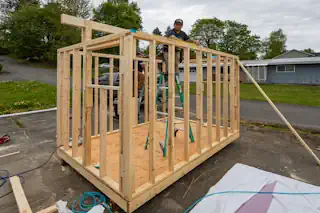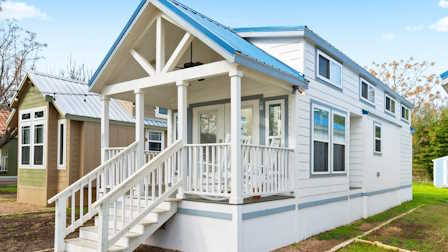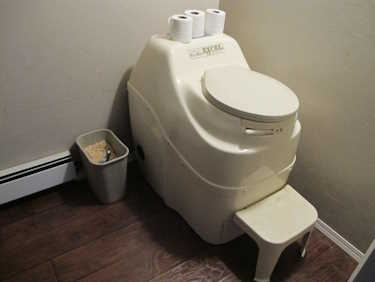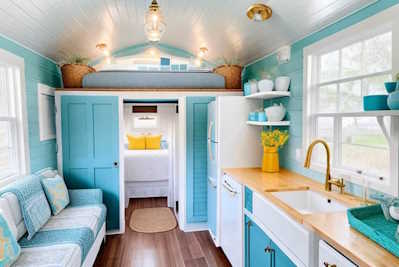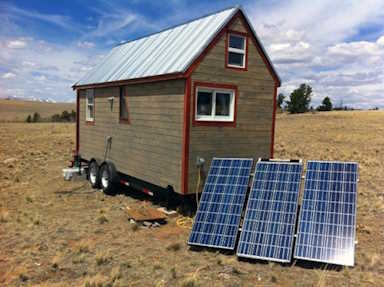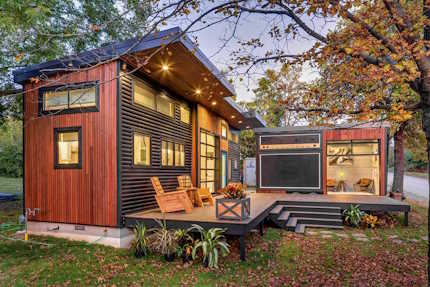Insulating for Comfort and Conservation: The True Art of Tiny Home Construction
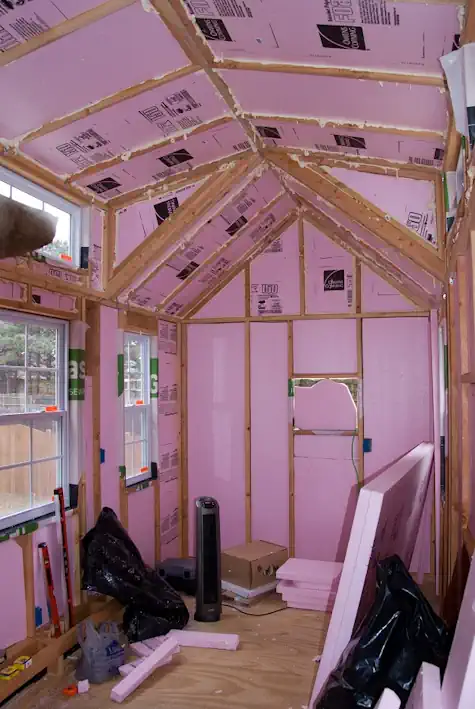
In the world of sustainable living and minimalistic design, the tiny home movement has captured the imagination of many aspiring homeowners. The allure of a reduced carbon footprint, lower living expenses, and a simpler lifestyle can be undeniably appealing. However, the art of tiny home construction is a nuanced practice that demands attention to detail, especially when it comes to maintaining comfort and energy efficiency within compact spaces. The unsung hero in this narrative is often the insulation—a pivotal element that helps regulate temperature, keeps energy costs low, and harmonizes your environment with the land you’re living on.
Tiny homes, by their very nature, are affected more significantly by outside temperatures due to their smaller volume of living space. Opting for the right insulation and understanding the installation process ensures the longevity and livability of your tiny sanctuary. This comprehensive guide will walk you through everything you need to know about insulating a tiny home, from types of insulation to case studies on well-insulated tiny homes, to a cost-benefit analysis and even a DIY step-by-step guide.
The Tender World of Tiny Homes and Insulation
Tiny homes are not just a smaller version of a typical house; they represent a shift in lifestyle and values. They often serve as a space where inhabitants can reduce their environmental impact and live in closer harmony with nature. Insulation is an integral part of this mission, as it directly influences the energy efficiency of the home. Air leaks and subpar insulation can lead to significant heat loss or gain, which isn’t just uncomfortable but detrimental to your eco-friendly aspirations.
An expertly insulated tiny home can maintain an optimal temperature with far less reliance on energy-intensive heating or cooling systems. This not only equates to more comfort but also resonates with your financial and environmental aims.
Striking the Right Balance with Eco-Friendly Insulation
When choosing insulation for your tiny home, it’s imperative to consider the environmental impact of your materials. Opting for eco-friendly options can align with the ethos of the tiny home movement and ensure that even the construction process minimizes its carbon footprint. Materials such as sheep’s wool, recycled denim, and aerogel are not just highly effective insulators but are also sustainable and often biodegradable.
Additionally, look for insulation with high R-values, which indicates a material’s resistance to heat flow or air conditioning. The higher the R-value, the better the insulator. While initial costs might be higher, the long-term benefits of superior insulation in terms of savings on energy bills and environmental impact make it a worthy investment.
A Guide to Insulating Your Tiny Home
Pre-Installation Preparations
Before you begin insulating, it’s essential to prepare your tiny home. Air sealing any cracks or areas where air could potentially escape or enter. This can be done with caulking or weatherstripping, ensuring your insulation remains effective once installed. A vapor barrier over the exterior of the wall or on top of the insulation materials is important. Air leakage can significantly reduce the effectiveness of the average insulation installation.
Next, ensure you have the necessary protective gear, a working environment with good ventilation, and all the tools required for the job, such as a utility knife, a staple gun, and safety glasses. Check with the insulation manufacturers for other safety considerations.
Tiny House Insulation Options and Installation
Choosing the Right Type
Selecting the right insulation for your tiny home is crucial. Here are various types to consider:
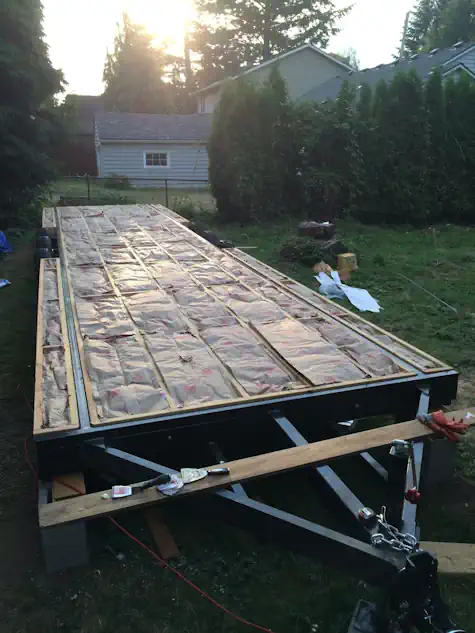
Fiberglass Insulation Batts or Blankets: These are pre-cut panels that fit in the wall cavities between the studs and are the most common types of insulation. While not the most eco-friendly, they are relatively inexpensive and offer a significant R-value. Thicknesses vary depending on the density of the material and the targeted r factor.
Spray Foam Insulation: This is a high-performance, two-component aerosol expanding foam. It offers an excellent R-value and effectively seals and insulates small cavities. However, it is not without environmental concerns and may be more suitable for those prioritizing performance over ecological impact.
Cellulose Insulation: Made from recycled newsprint treated with fire retardants, this is an eco-friendly and budget-friendly option. It is blown or poured into place, which can be a DIY-friendly installation process.
Rigid Foam Panels: These are an excellent choice for insulating the underside of a home. They are durable, moisture-resistant, and can be left exposed in interior spaces. As a vapor barrier or vapor retarder these panels are hard to beat.
DIY Techniques for Insulating Your Tiny Houses
Whether you’re a seasoned DIYer or this is your first big project, it’s helpful to have a few techniques in your toolkit when working with insulation materials:
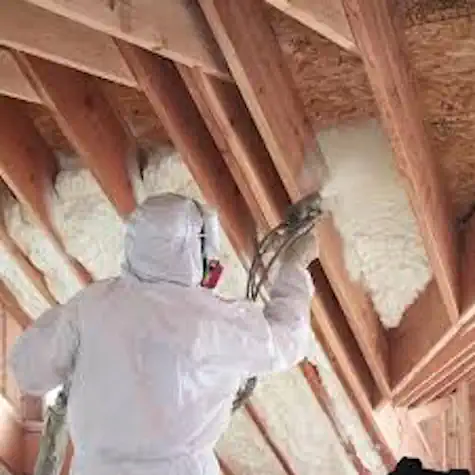
Batt Insulation Installation: For fiberglass insulation batts, cut to the size of the cavity and tuck firmly into the wall cavity. Use a layer of sealing tape to ensure airtight insulation.
Blown-In Cellulose: If you’re using cellulose or a similar material, a DIY blower machine can be rented from a local hardware store. Make sure to wear protective gear and evenly distribute the material to the desired depth in the wall cavity.
Spray Foam Safety: If you decide to go with spray foam insulation, remember that it’s a chemical product and requires careful handling. Follow the instructions closely and consider hiring a professional. Air infiltration in spray foams is possible if the equipment is not used properly. Variations in the spraying process can result in a varying r value per inch of your spray foam insulation.
Wall Systems: There are many manufacturers of prefabricated walls who can make higher r value walls per building regulations. These systems usually include roof and floor framing with insulation built directly into the structure.
Insulating the Windows and Other Drafty Areas
Don’t forget to insulate areas other than the walls. Windows and doors are key spots for heat transfer. Here’s how to insulate them properly:
Window Insulation Film: This is a simple and effective way to reduce drafts from windows. Apply adhesive to the window frame and use a hairdryer to shrink the film for a tight seal. In a cold climate area window film can be a game changer.
Draft Stoppers: These can be as simple as rolled-up towels placed at the bottom of doors to prevent air from escaping. For a more permanent solution, consider a door sweep or caulking the gaps around the frame.
Insulated Skirting: If your tiny house is mobile, don’t forget to add a high r value insulated skirting to turn the space under the home into a closed cell for the best insulation possible. In hot climates, an insulated skirt with higher r values will save on air conditioning expenses as the heat rises.
Post-Installation Checks
Once you’ve insulated your tiny home, the job isn’t quite done. It’s essential to check for any insulation that wasn’t fully installed or might have shifted. Look out for any gaps or breaks in the insulation that could allow for heating or cooling to escape.
The use of a thermal camera can really help you see not only leaks but also areas where the thermal resistance is not meeting expectations. Fixing the walls, floors, or roof before finish work starts or at least knowing where heat may escape is vital to long-term success.
Crunching the Numbers: Insulation Costs and Benefits
Insulating your tiny home, like any home improvement project, has associated costs. But it’s important to view these costs through the lens of long-term benefits. Getting the highest r value per inch in a thin layer will provide cost savings you will see in your utility bills.
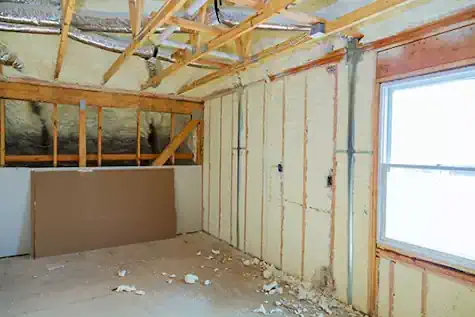
Calculating the Real Costs
Start by calculating the square footage of the area that needs to be insulated. Then compare the initial cost of materials and potential professional installation services (should you choose not to DIY) against your estimated utility bill savings over time. The payback period is where you see the value of your insulation investment.
Investing in Your Home’s Future
Quality insulation is not a mere expense; it’s an investment in the future of your tiny home. Lowered energy bills, a more consistently comfortable living environment, and the satisfaction of contributing to a healthier planet are significant returns on this investment. When done right, insulation is great stuff and will add a lifetime of comfort and efficiency to your tiny house.
Ensuring a Cozy and Eco-Friendly Home
Tiny home dwellers choose this lifestyle for various reasons, often related to a desire for a cleaner, simpler way of living. For those who dare to dream tiny, ensuring your home is a cozy, energy-efficient oasis that aligns with your values is a labor of love. The insulation forms the very core of this dream, not just keeping you warm in the winter and cool in the summer but also treading lightly on the Earth.
In this guide, we’ve explored the importance of quality insulation in tiny home construction, explained the various types suitable for eco-conscious builders, offered a step-by-step DIY guide to insulation, shared case studies of exemplary tiny homes, and dove into the cost-versus-benefit analysis of insulation choices.
Conclusion
Tiny homes are a testament to the fact that great things often come in small packages, and with the right insulation, these small sanctuaries can offer big comfort and sustainability. Whether you’re in the planning stages of your tiny home or looking to upgrade your existing space, taking the time to insulate properly will pay dividends for years to come.
Insulation is just one piece of the puzzle in creating a perfect tiny home, but it’s a critical one. Expend the effort and resources necessary to insulate with integrity, and your tiny home will be a beacon of comfort and conservation in the world of small living.
For a brighter, greener today and tomorrow, take the first step towards tiny home sustainability — insulate your space with care and thoughtfulness. The cozy, efficient haven you create will be a testament to the undeniable benefits of this approach to life and living.
FAQ: Insulating Your Tiny Houses
How much insulation does a tiny house need?
The amount of insulation you need depends on your climate and the specific requirements of your tiny house. It’s essential to calculate the R-value suitable for your area and ensure that your insulation meets at least this minimum for optimal efficiency.
Can I install insulation in a tiny house myself?
Yes, many forms of insulation, such as batt or fiberglass insulation and blown-in cellulose, are manageable as DIY projects. However, for spray foam insulation, it’s recommended to consider professional installation due to the chemical handling and application expertise required.
What is the most eco-friendly insulation material?
Materials like cellulose insulation, made from recycled paper, and certain types of wool insulation, are considered eco-friendly options. They have lower environmental impacts in production and disposal compared to traditional fiberglass or foam insulations for interior walls or exterior walls.
Can I use spray foam insulation for the roof floor of my tiny house?
Insulating the roof or floor of a tiny house can be effectively done with rigid foam panels or spray foam insulation to create a barrier against cold and moisture. Ensure that the insulation is properly sealed to prevent air leaks.
What is the cost-benefit of insulating a tiny house?
While the upfront costs of insulation can be significant, especially for higher-performing materials, the long-term savings on heating and cooling bills can be substantial. Proper insulation also increases the comfort and livability of your tiny home, making it an investment in quality of life as well as in future expenses.
Are there any innovative tiny home insulation options?
Yes, new materials and technologies are continually being developed. Some innovative options include aerogel insulating blankets, sheep’s wool insulation treated for fire resistance, and denim insulation made from recycled jeans. These options offer unique benefits and eco-friendly attributes for tiny house builders looking to push the envelope in sustainability.
How often should insulation be replaced or checked?
Insulation should be checked annually for signs of damage or deterioration, such as moisture buildup or pest infestation. While some insulation types have longer lifespans, it’s crucial to ensure that your insulation remains effective to maintain energy efficiency in your tiny home. Signs of moisture on the walls may be an indicator that the walls are not maintaining a temperature equal to the ambient temperature of the room.
